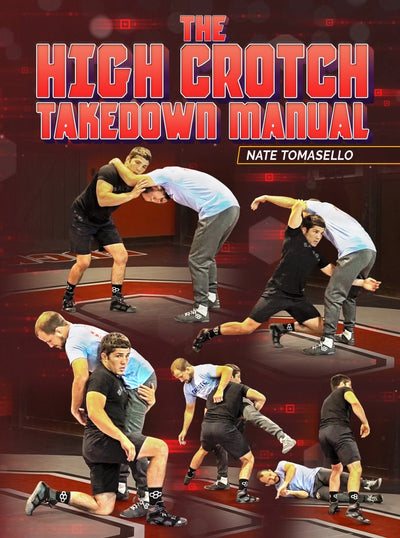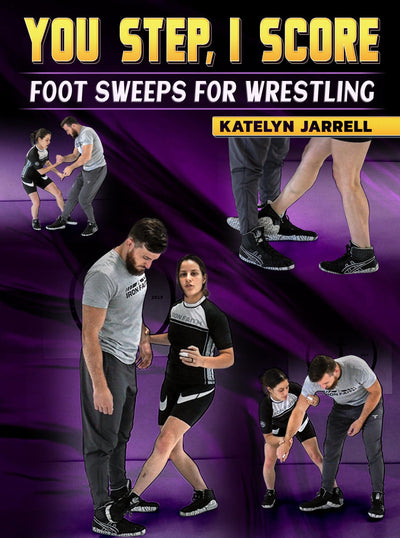Strength and Conditioning For Wrestling Part 2
This second part of the strength and conditioning series for wrestling will be slightly more visual. The goal of this blog is to give an example of how to structure a basic regimen for all three seasons that an athlete goes through. It will also have a helpful link or two to a couple noteworthy individuals who specialize in a very no-nonsense workout routine for their athletes.
Coach Dustin Myers, CSCS, is a well renowned strength and conditioning coach, most famous for his work with wrestlers at Ohio State University, his work with Max Effort Muscle, and his role as a primary coach for the Old School Gym in Columbus, Ohio. Coach Myers has coached wrestler at their most amateur level to as high as Olympic caliber. He is one of the few men or women I thoroughly trust on the topic of wrestling preparation. Coach Myers already has some templates and major exercises for wrestlers to the build the strength necessary to perform well, avoid injury, and feel their best. Here is a link to some of his work on the Max Effort Muscle website:
maxeffortmuscle.com/articles/training/combat/the-dirty-dozen-12-essential-strength-exercises-for-wrestling
Coach also has some tips for diet, and rehab/prehab work that you might find useful to use.
Ready to get 1% better EVERY DAY? Click Learn More!
Another coach that I have a tremendous amount of respect for is Jim Wendler. Jim was a Division 1 football player at the University of Arizona, a world class powerlifter (most notable lift was a 1,000lb squat at 275), and a football coach with experience in high school and college levels. Wendler developed a program called “5/3/1” perhaps on of the easiest and most effective systems in resistance training. You can simply google the program and you’ll find numerous ways to implement lifts, and conditioning aspects into your training that cater to your individual needs.
As promised earlier, I’ll lay out a sample workout for a day for each of the three athletic seasons just as an easy base to follow. This is something I use personally with Coach Wendler’s 5/3/1 programming as a base for my big lifts.
Offseason
|
Lift |
Training Max |
Sets |
Reps |
|
Bench |
180lbs |
3( not including any warm ups) |
5 @ 65/5 @75/5 or more @85% |
|
Standing Military Press |
N/A |
3 |
10-12 |
|
DB Rows |
N/A |
4-5 |
8-10 |
|
Face Pulls |
N/A |
4 |
8-12 |
|
Hammer Curls |
N/A |
2 |
15 |
|
Tricep Pushdowns |
N/A |
2 |
15 |
5/3/1 in a nutshell
Training Max refers to 90% of your 1RM. So if your 1RM on bench is 200lbs, your training max will be 180lbs. There are four weeks in a phase:
5’s week: 5’s week is displayed above. 3 sets, 1 set of 5 @ 65% of our training max, 1 set of 5 @ 75% of our training max, and 1 set of 5 or more @ 85% of our training max. So it’ll look like this:
Set 1: 1 set, 5 reps, @ 115. it comes out to 117, but I follow a rule of thumb that if it’s 2.5lbs or higher over the round number, go up, if not, go down. So had it been 117.5 we would go up to 120.
3’s week: 1 set of 3 at 70%, one at 80%, and one of 3 or more at 90%. so using the same 180 TM:
Set 1: 3 reps @ 125
Set 2: 3 reps @ 145
Set 3: 3 or more reps @ 160
5/3/1 week: 75%, 85% and 95%
Using the same 180 TM:
Set 1: 5 reps @ 135
Set 2: 3 reps @ 155
Set 3: 1 or more reps @ 170
Deload week: Big lifts performed at 40, 50, and 60%. All accessory lifts are lowered to 70% of the highest weight you’ve used in the phase. Using the same 180lbs TM:
Set1: 5 reps at 70lbs
Set 2: 5 reps at 90lbs
Set 3: 5 reps at 110
Note: Deload week never exceeds a set of five on our big lifts. We can keep the reps on all auxiliary lifts the same. So if you were rowing a 60lb dumbbell for 8-10 reps, on deload week you would use a 40lb dumbbell. I always recommend buying the ebook, hard copy, or reviewing the actual program as written to get all the details, but the templates I provide should give you a good place to start. After you finish the lift, then you can go into any wrestling specific drills your coach has you do, or safe them for the next day.
Preseason:
The big transition you’ll see here is more time for wrestling specific exercises, and conditioning work. For the sake of consistency we’ll stick with the 180lb TM example.
|
Lift |
TM |
Sets |
Reps |
|
Bench |
180 |
(sets & reps depend on phase. Read original 5/3/1 program.) 3(not including any warm ups). |
3 @ 70%, 3 @ 80%, and 3 @90% |
|
Strict overhead barbell or dumbbell press |
Only applicable if you use it as one of your big lifts. |
5 |
10 @40%-50% of your TM, or a weight you can easily handle but will challenge your muscle endurance. |
|
Lat/Trap work |
N/A |
Lats: 5 Traps: 5 |
Lats: 10 Traps: 8-15 |
|
Resistance band snap downs |
N/A |
2 |
20-30 |
|
Weighed med ball carries. (Hold in suplex grip tight to your chest) |
N/A |
4-5 |
15-30 yards or 45-90ft |
Conditioning: Battle Ropes 45 secs on 15 secs off for 8-10 mins
Then, intense hand fighting with a partner 30 secs on, 30 secs off. If you don’t have a partner do stance and motion drills with the same intervals. 8-10mins.
Lastly, do 8-10 mins of partner harness pulls. Strap yourself into a harness, and try to shoot, bear crawl, baby crawl, army crawl, or stance/motion while your partner is holding you back. If you don’t have a harness you can use a rope or a resistance band. If you don’t have a partner use a resistance band and latch it to something stable.
Note: the rep range for the trap work can be done based on feel. If you’re feeling taxed, go light weight for 12-15 reps. If you feel good, go heavier for 8-10 reps. On the snapdowns, attach your band to something stable, and imitate your snapdown motion with intensity. On the med ball holds, suplex grip means like you were going to throw an opponent.
During Season:
Priorities here are to spend less time in the weight room, and more time in practice. Also, to ensure that each athlete is properly recovering.
|
Lift |
TM |
Sets |
Reps |
|
Bench |
180 |
(Depends on what phase you’re in) 3 |
5/3/1 5@75% 3@85% 1@95% |
|
Strict Overhead Press |
Only applicable if it is used as one of your big lifts. |
5 |
10@40-50% if it is a big lift, if not, do a weight easy, yet challenging to do 5 sets of 10 with. |
|
Lats |
N/A |
5 |
10 |
|
Traps |
N/A |
4-5 |
8-15 |
|
Stretch and/or light jog |
10mins |
Note: Notice there isn’t any core work written into any of the sample templates, there is a reason for this. Core work should be done every day, whether during your lift or in practice and I’ll leave that to user’s preference. I usually do 4-5 sets of 8-20 reps on the back hyperextension. The reps depend on if they are weighted or not. With just my bodyweight I typically go more for the 20, weighted, it just depends on how heavy.
Also, your TM goes up every phase. Your upper lifts go up 5lbs, and your lowers go up 10lbs. In the event that you cannot hit the prescribed reps, cycle back 3-4 phases and go from there. I cannot stress this enough, PLEASE read the basic 5/3/1 template at least to make sure you understand that part of the programming. Bench, Squat, Deadlift, and OHP are the lifts that the original program prescribes, however the template can be modified to deal with most other lifts, including power cleans, snatch, push press, etc.
Stay with me for part 3 where I’ll cover some basic dieting, hydration, and post weigh in options to help you perform your best. Happy training homies! Hope this helps!

If you got 1% better EVERY DAY where would you be in a year? Ricky Lundell can take your strength to an all new level with his 1% Better Every Day Strength Building System!









